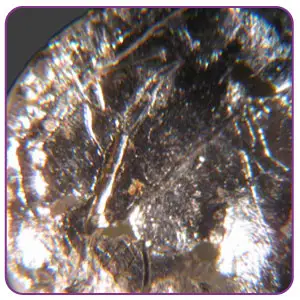What is Americium?
- Americium is a man-made actinide element with the atomic number 95 and no stable isotopes, according to the periodic table.
- Glenn Seaborg, Leon Morgan, Ralph James, and Albert Ghiorso discovered it in 1944, and B.B. Cunningham isolated it as the isotope 241Am in Am(OH)3 in the fall of 1945.
- It was given the name America (Seaborg 1991; Seaborg and Loveland 1990).
- Actinides are the 15 elements with atomic numbers ranging from 89 to 103, beginning with actinium and concluding with lawrencium.
You can Read More Chemistry Articles.
| Symbol | Am |
| Atomic Number | 95 |
| Atomic Mass | (243) |
| Discovered by | Americium was discovered by Glenn Seaborg and colleagues. |

Element Information
| Group | Actinides | Melting point | 1176°C, 2149°F, 1449 K |
| Period | 7 | Boiling point | 2011°C, 3652°F, 2284 K |
| Block | f | Density (g cm−3) | 12 |
| Atomic number | 95 | Relative atomic mass | [243] |
| State at 20°C | Solid | Key isotopes | 241Am, 243Am |
| Electron configuration | [Rn] 5f77s2 | CAS number | 7440-35-9 |
| ChemSpider ID | 22405 | ChemSpider is a free chemical database |
Production of Americium
Americium has been created from the 239Pu isotope of plutonium in nuclear reactors for several decades. In nuclear reactors, Uranium is first transformed to Plutonium isotope 239Pu, then 239Pu captures two neutrons, followed by beta decay, yielding Americium – 241. (241Am).

Properties of Americium
- The most stable oxidation state for americium is +3. It quickly interacts with oxygen, hydrogen, halogen, and a number of other elements, and it dissolves in aqueous acids.
- Americium has multiple oxidation states, including +2, +3,+4,+5,+6, and +7. Compounds of americium with an oxidation state of +4 or higher are potent oxidizers.
- AmO2+2 is an oxidant as potent as KMnO4.
- In an aqueous solution, americium compounds have the following tint:
- Am3+ – yellow-reddish
- Am4+ – yellow-reddish
- AmO2+ – yellow
- AmO2+2 – brown
- AmO65− – dark green
Uses of Americium
- Americium-241 (241Am) is utilized in extremely minute levels in ionization smoke detectors for homes. Americium shares several similarities with plutonium (Pu). While the public accepts the use of minute quantities of 241Am in residential smoke detectors, the public’s reaction to the transfer of any quantity of 239Pu under appropriate restrictions is quite different.
- It contributes to the creation of nuclear energy as a decay product.
- In the coming years, Americium can serve as a suitable replacement for Plutonium in the production of spacecraft batteries, due to its scarcity.
- Americium -241 is a valuable source of alpha particles in the laboratory.
Frequently Asked Questions – FAQs
Q.1 What is americium used for?
Americium is a radioactive metal with a silvery sheen. Americium can serve as a suitable replacement for Plutonium in the manufacture of spacecraft batteries in the next years, as Plutonium is becoming increasingly scarce. Americium is extensively used in smoke detectors. It is also employed as a source of alpha particles in laboratories.
Q.2 How much americium is in a smoke detector?
1 microcurie of americium is utilized in a modern smoke detector (37 kBq). Some older industrial smoke detectors employed as much as 80 Ci.
Q.3 What is the americium 242 half-life?
16.02 hours is the half life of Americium-242.
Q.4 Why is americium used in smoke detectors?
Americium is used as a source of alpha particles in smoke detectors. Air molecules are ionized by alpha particles emitted from an americium source to generate positively charged and some negatively charged particles. Inside the ionization smoke detector, two charged plates generate a flow of positively and negatively charged ions. The smoke alarm is activated when smoke disrupts the steady flow of ions.
Q.5 What elements react with americium?
Variable oxidation states of Americium include +2, +3,+4,+5,+6, and +7. It quickly forms compounds with oxygen, hydrogen, halogen, and numerous other elements. Americium interacts with oxygen to produce AmO2, with halogen to produce AmF4, and with hydrogen to produce AmH2.

